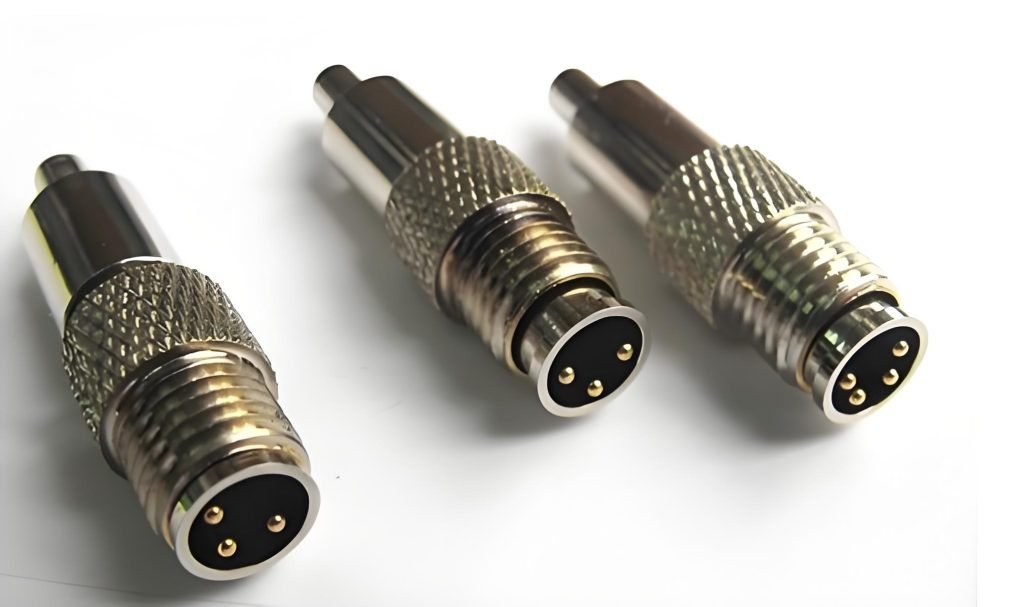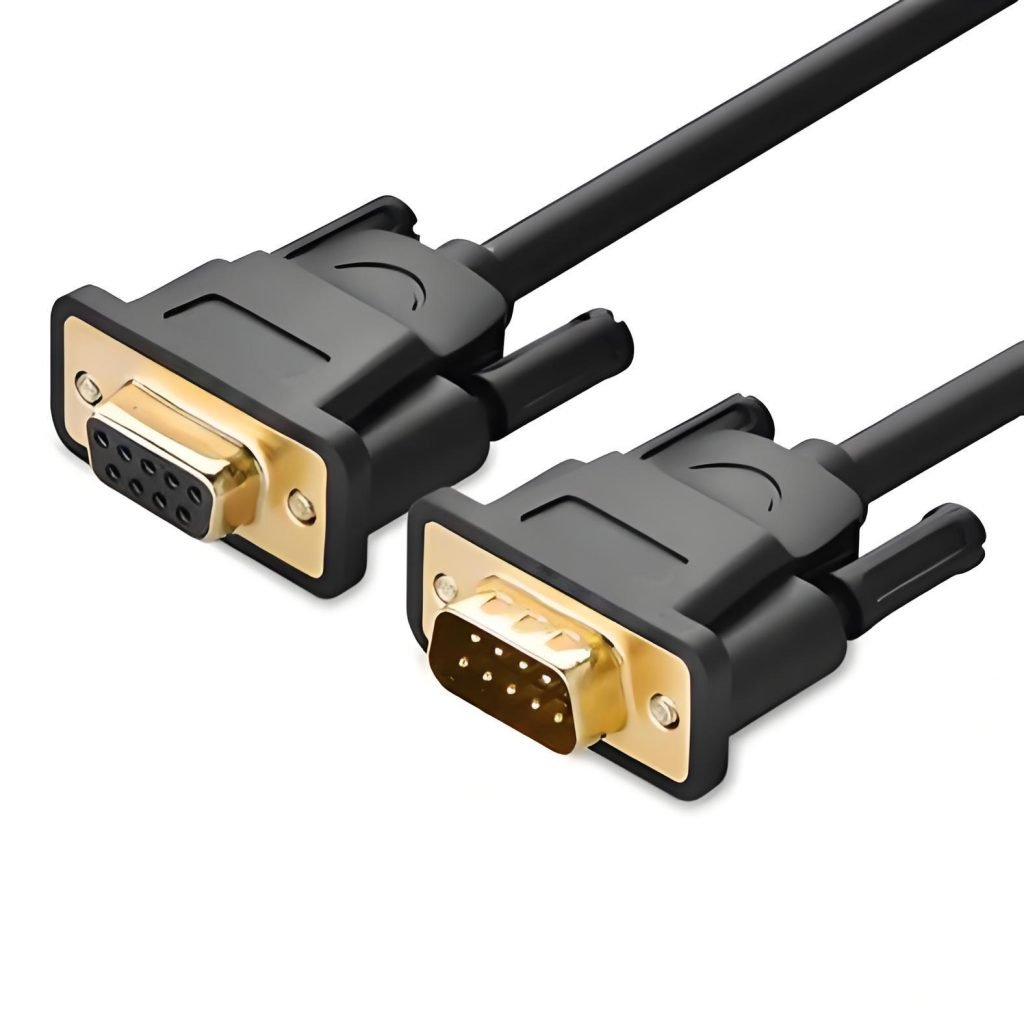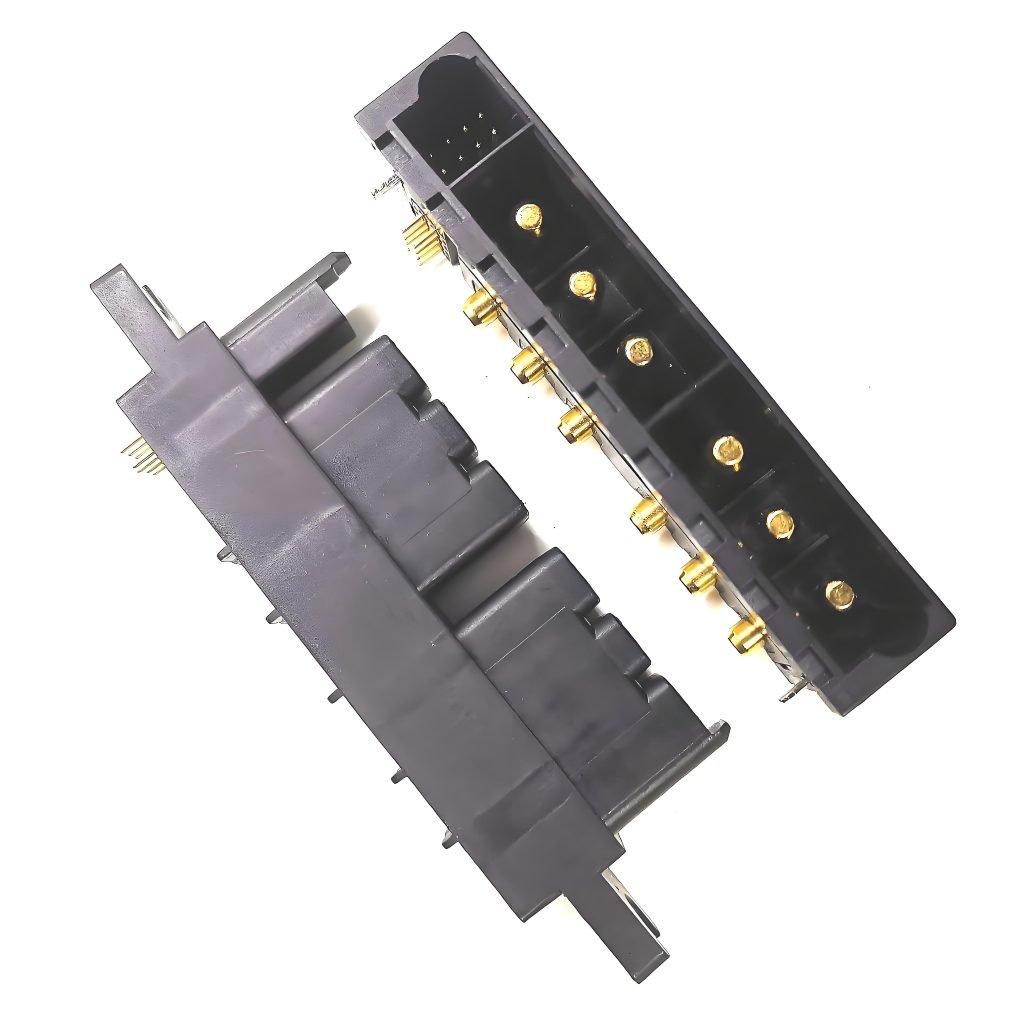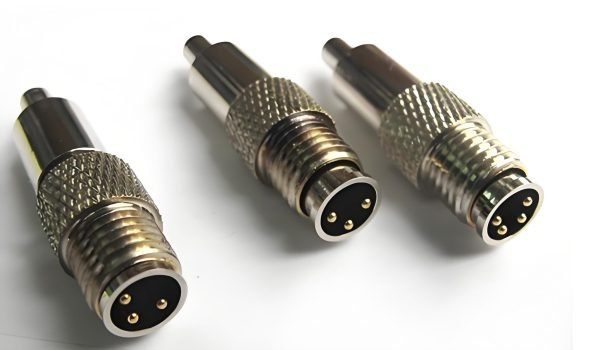Electrical connectors are the backbone of electronic and electrical systems. They enable power and signal transfer between devices. These critical components create secure and reliable electrical circuits in everything from household appliances to complex industrial machinery. The design of the connectors varies depending on the application – some have 2-4 contacts for simple needs, others have 13 or more contacts for complex communication networks.
Whether it’s the USB port on your laptop, a diagnostic interface in a car or a multi-pin connector in an aircraft system, connectors ensure uninterrupted, safe and effective energy transfer. This article will look at the main components of electrical connectors, their functions, manufacturing processes, material selection and key considerations for choosing the right connector for your application.
What are Electrical Connectors
An electrical connector is a device that joins electrical terminations and makes an electrical circuit. These can be permanent, like those on a circuit board or removable like power cords and USB ports. Their job is simple: to connect two or more electrical conductors together and allow the transfer of electrical signals or power.
Two main parts make up any connector:
- Contacts – Metal elements that establish and maintain the electrical connection between conductors.
- Housing – An insulating shell that protects the contacts and supports structural integrity.

Common applications
Electrical connectors are used in many industries:
- Automotive: In cars, connectors connect sensors, batteries, lighting and infotainment systems.
- Aerospace: Connectors here must withstand extreme temperatures, vibration and pressure.
- Industrial machinery: Robots, control panels and heavy duty equipment use rugged connectors to ensure uptime.
- Consumer electronics: From USB ports to headphone jacks, connectors keep our devices working.
- Medical devices: Connectors must be sterilizable and secure enough to handle ECG, MRI and other types of equipment.
- Data centers: Servers and routers rely on high performance connectors for uninterrupted data flow.
Role in Creating Secure and Reliable Electrical Circuits
Electrical connectors create safe paths for electrical current to flow between circuits or components. System reliability depends on them. A loose or bad connection can cause sparking, overheating and fire risks. Good connectors keep systems running smoothly which is especially important in hospitals and factories.
These connectors do more than just connect circuits. They have built in features that protect against environmental damage. Many have seals that keep out moisture and dust, and protect against vibration. This protection ensures connections work correctly especially in outdoor or harsh industrial environments.
Good connectors reduce electrical resistance which in turn reduces energy losses and helps systems run more efficiently. The right connector choice and proper installation make electrical systems safer, more efficient and longer lasting.
Main Components of Electrical Connectors
Connectors are more than just plastic plugs and metal pins. They are precision engineered components that must work together seamlessly. Below, we’ll look at each major part and how it’s made.
1) Connector Housings
Connector housings are the framework for the entire connector assembly. These enclosures provide structural support and ensure all internal parts stay properly aligned and protected. They are more than just passive shells – they actively contribute to performance and durability.
Function and Importance
Housings play four key roles: they isolate electrical contacts to prevent short circuits, align mating components for easy insertion, protect delicate components from physical damage and shield internal systems from environmental threats. In high stress environments, housings maintain form and function so that connectors fit and perform reliably. They also make it easier to install connectors in systems via mounting features like clips, screws or locking tabs.

Common Materials (Plastic, Metal, Ceramic)
Material selection depends on the usage environment:
- Plastic Housings: Typically made through injection molding using high performance thermoplastics like PPS, PET, PBT and LCP. They are lightweight, resistant to corrosion, and budget-friendly.
- Metal Housings: Aluminum alloys like 6061-T6 are used for their strength, thermal conductivity and durability in harsh conditions.
- Ceramic Housings: Used in high heat or high voltage applications, they are found in thermocouples and large bulb sockets.
Environmental Protection
To ensure connectors work in tough environments, housings must protect against dust, water and vibration. IP67 and IP68 ratings show a device’s resistance to dust and water intrusion.
O-rings, cable grommets and gaskets block contaminants. Some housing even have EMI shielding through conductive coatings or fitted gaskets to suppress electromagnetic interference.
Variants in Design
Connector housings come in circular, rectangular and angled formats. Circular types are easier to seal and often more rugged. Locking mechanisms include bayonet locks (quick and secure), threaded couplings (tighter seal), push-pull latches, snap fits and levers. Each suit is designed to meet specific needs for convenience and reliability.
Manufacturing Process
Plastic housings are made through injection molding, where molten plastic is shaped and cooled in molds. Metal housings use die-casting or CNC machining, followed by plating with materials like nickel or cadmium for conductivity and corrosion resistance. X-ray fluorescence and visual inspections help maintain uniformity and optimal performance.
2) Connector Contacts
Connector contacts are the conductive elements in electrical connectors. They create paths for electrical current flow. These metal components connect mating connector pairs both electrically and mechanically to maintain signal integrity throughout the system.
Purpose in Electrical Systems
Contacts are critical to ensuring a low resistance path for current and signal transfer. They must maintain a consistent force and contact area to minimize resistance and avoid performance loss. Contact resistance is a key metric in performance evaluation and materials are chosen to keep it as low as possible.
- Pin and Socket: Common in most connectors, male pins and female sockets that fit together snugly.
- Blade: Flat contacts with large surface areas, suitable for high current applications.
- Spring-Loaded (Pogo Pins): Compressible contacts that allow easy engagement and durability.
- Hyperboloid: Made of interwoven wires forming a cage, high reliability and shock resistance.

Materials and Surface Coatings
Copper alloys like brass and phosphor bronze form the core, a balance of strength and conductivity. Coatings enhance performance:
- Gold: Low contact resistance and corrosion resistance, ideal for low voltage, sensitive circuits.
- Silver: Best electrical conductor, suitable for high power applications but prone to tarnishing.
- Tin: Affordable and good for soldering, but less durable under high heat or repeated mating cycles.
Manufacturing insight
Connector contacts are produced by manufacturers using either stamping or computer numerical control (CNC) machining techniques. Stamping runs thin metal strips through fast moving dies that shape the metal precisely. This automated process is cost effective for large production runs.
The contacts then go through electroplating to add metal coatings that conduct better and resist corrosion. Advanced sensors and vision systems check important measurements and shapes. These quality controls ensure each production run meets performance standards.
3) Connector Terminals
Terminal connectors create the links between electrical conductors and connector bodies. They are the physical interfaces that provide electrical continuity. These components create reliable connections that allow current to flow from wires into the connector system while maintaining structural integrity.
Role as the Wire Interface
Terminals are the bridges between wire conductors and connector systems. They often involve a metal core wrapped in insulating plastic with holes for wire insertion and built-in mechanisms for securing those wires. The metal used must match the conductivity of the wire for good performance, commonly copper-based alloys.
Types of Terminals
- Crimp Terminals: Use a crimping tool to attach the terminal to the wire securely. Fast, reliable and vibration resistant.
- Solder Terminals: Solder the wire to the terminal. Strong electrical bond if done correctly.
- Screw Terminals: Use a screw to hold the wire. Ideal for applications that require maintenance or future adjustments.
Mechanical and Electrical Considerations
Terminals are designed for both strength and current capacity. Mechanical tests ensure durability under stress, including flexing and pull-force evaluations. Ability to carry current depends on material conductivity, connection quality and environmental factors. Proper sizing and testing prevents overheating and device failure.
Manufacturing insight
Terminal manufacturing starts with stamping. Thin metal strips pass through high speed presses that create precise shapes. The contacts are then electroplated with metals like gold or tin to improve conductivity and prevent corrosion. Quality checks throughout production. Sensors and camera vision systems check dimensions.
4) Insulation and Seals
Electrical connectors need invisible barriers to maintain their operational integrity through proper isolation and protection. These non-conductive components play a critical role in ensuring reliable performance even in harsh conditions.
Dielectric Separation of Conductive Parts
Insulation materials prevent electricity from leaking between parts inside a connector. Thermoplastics like PA, PC and PVC are common due to their good resistance and molding ease. High heat applications require thermosets like phenolic or epoxy resins. For special needs PTFE (Teflon) and polyimide films like Kapton provide extreme temperature and chemical resistance, often in military or aerospace applications.
Protection Through Sealing (IP Ratings)
Seals prevent dust, moisture and liquids from entering. IP ratings show how well the connector performs under these conditions:
- IP67: Dust tight and short term water immersion.
- IP68: Long term submersion.
- IP69K: High temperature water spray, used in industrial environments.
Seals can be formed from silicone rings, molded gaskets or custom barriers to fit each housing and prevent leakage at connection points.
Manufacturing Process
Insulators and seals are molded using injection molding for precision and repeatability. Silicone and epoxy resins can be added for custom seal applications. For the most demanding uses hermetically sealed connectors are created by bonding glass or ceramic to metal, forming air and moisture tight connections. These are tested for pressure and leakage.
Extra Features and Add-Ons in Electrical Connectors
Electrical connectors often come with extra features to make them more reliable and easier to use. These features protect the connections, prevent errors and ensure everything fits together correctly.
1) Strain Reliefs
Strain reliefs, also known as cable glands, protect wires from being pulled or damaged. They keep the wires connected especially in areas with a lot of movement or temperature changes. These parts reduce pressure on the cables and stop them from bending too much or rubbing against surfaces.
Strain relief can be built into the connector or added as a separate part. Good strain reliefs are strong and can withstand harsh chemicals. Some brass versions can even work underwater up to 300 feet deep.
2) Keying Mechanisms
Keying mechanisms are special shapes or notches that ensure only the right connectors can fit together. This prevents you from connecting the wrong parts by mistake, especially when many connectors look the same.With keying, connector A will only fit with its correct match. This helps workers connect parts quickly without having to inspect labels or markings closely.
3) Polarization Features
While keying stops wrong pairs from connecting, polarization makes sure connectors fit together in the correct direction. Manufacturers add shapes or patterns so you can’t plug a connector in the wrong way.
Polarization is very helpful when you can’t see what you’re doing, like during “blind mating”. These features prevent incorrect connections that can cause problems such as poor signals, broken parts or short circuits.
How Electrical Connector Manufacturers Customize Components
Standard connectors are good for many applications but custom connectors are needed for special applications. They meet specific mechanical, electrical or environmental requirements that standard options can’t handle.
Industry Standards vs. Custom Designs
The choice between standard and custom connectors depends on the specific requirements of the application. Custom connectors are ideal when unique specifications, harsh environments or design layouts prevent standard use. They meet exact requirements without unnecessary features, making them more cost effective in the long run.
Customizing Housings, Contacts and Terminals
Manufacturers customize connectors by modifying:
- Housings: Size, material and mounting features to handle moisture, temperature extremes and chemicals.
- Contacts: Pin shape, length and plating – gold for conductivity, silver for high power.
- Terminals: Mechanical strength and current load; tested by rotating conductors with weights for durability.
Quality Assurance and Testing
Custom connectors are tested rigorously, including life cycle simulations, temperature and altitude changes, bend tests and environmental exposure. QA includes multiple inspections with sensors and cameras to ensure dimensional accuracy.
Showcasing Mold Making and Machining Services
Manufacturers with in-house CNC machining and mold-making capabilities offer faster and more precise customization. They produce overmolded connectors that protect sensitive parts from water, improving both speed and quality by managing design and production under one roof.
Tips for Choosing the Right Connector
Choosing the right electrical connector for your application involves multiple key factors. Connectors need a full picture since they directly affect system reliability, performance and safety.
- Connector selection starts with defining electrical parameters like voltage and current requirements for each contact. Current capacity depends on contact and wire size, and voltage ratings relate to spacing and insulation. Temperature rise specs help assess heat dissipation under load.
- Environmental conditions also matter. Consider the connector’s temperature range, chemical resistance and moisture. Look at its IP rating for dust and water protection—IP68, for example, can be 1 meter for 30 minutes up to 30 meters for 8 hours.
- Mechanically think about wire gauge compatibility, mating cycles and size constraints. Termination types vary—solder for sealing, crimp for easier repair. Housing material also matters—brass with nickel or chrome plating is durable, aluminum is lightweight and stainless steel is corrosion resistant.
Make sure the connector meets industry standards like UL and check for certifications from SAE, CSA or IP, depending on your application requirements.
Conclusion
Knowing the components of electrical connectors is key to choosing the right products and system success. From connector housings that shield and align to connector contacts and terminals that provide the electrical path, each part is critical to performance and durability.
Working with experienced electrical connector manufacturers ensures product reliability and access to custom solutions. Their mold making and CNC machining services enable fast innovation and customization for your application. As electronic systems become more complex and demanding, the once-overlooked connector plays an increasingly vital role. Whether you’re sourcing components, designing circuits or maintaining infrastructure, knowing your connectors inside out can make all the difference.




